First you’ll see a short summary of what is in your detailed vehicle history report.
*Please notice, that if you have a VIN for a relatively new vehicle, and you find one or two records in the report for it - in most cases that means that everything is okay with the vehicle and that’s why there may be less records than shown in the sample report.
2011 Honda Fit - VIN JHMGE8H64BS009779
- indicates the Year, Make and Model of the vehicle and its
VIN
number.
The Outline will show you a short description of what you’ll see in your report and how many records are in each section. If you click on any of the sections below the picture, for example clicking on the “Odometer” - you’ll be transferred to the Mileage records with more detailed information.
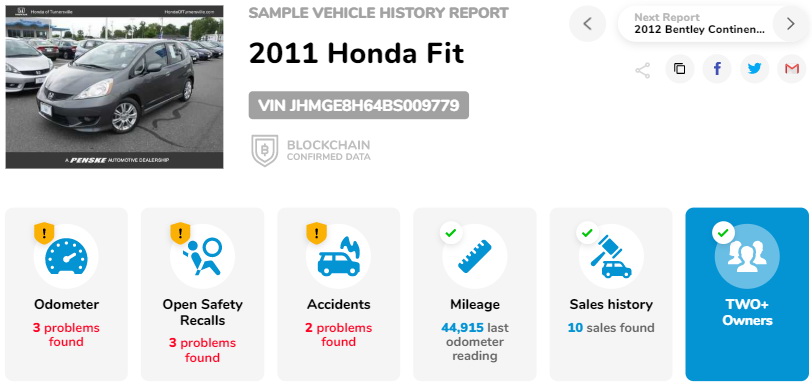
What does a VIN report show? On the right side of the page with your report - you can see the compact summary of report.
Click at any line and get information:
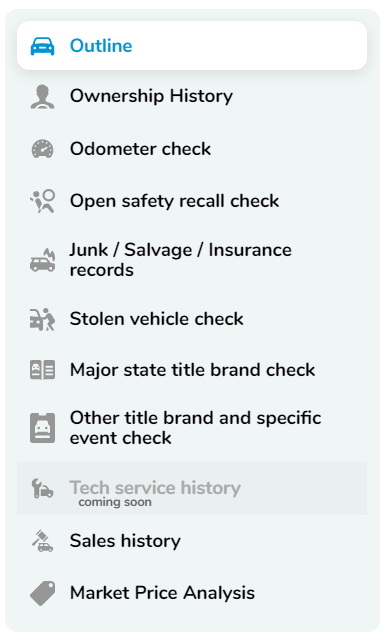
When you click on the number of records found, you are transferred to the detailed section with more information. Here you can see VIN owner history.
- For example in Ownership History you’ll be able to see the Number of Owners with Estimated length of use which in return will give you an understanding how the vehicle was used.
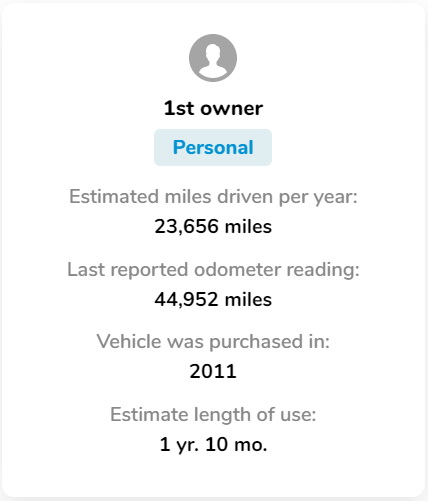
- In the Vehicle Details you’ll see all specifications regarding the vehicle: make, model, body style, fuel type, drive line etc.
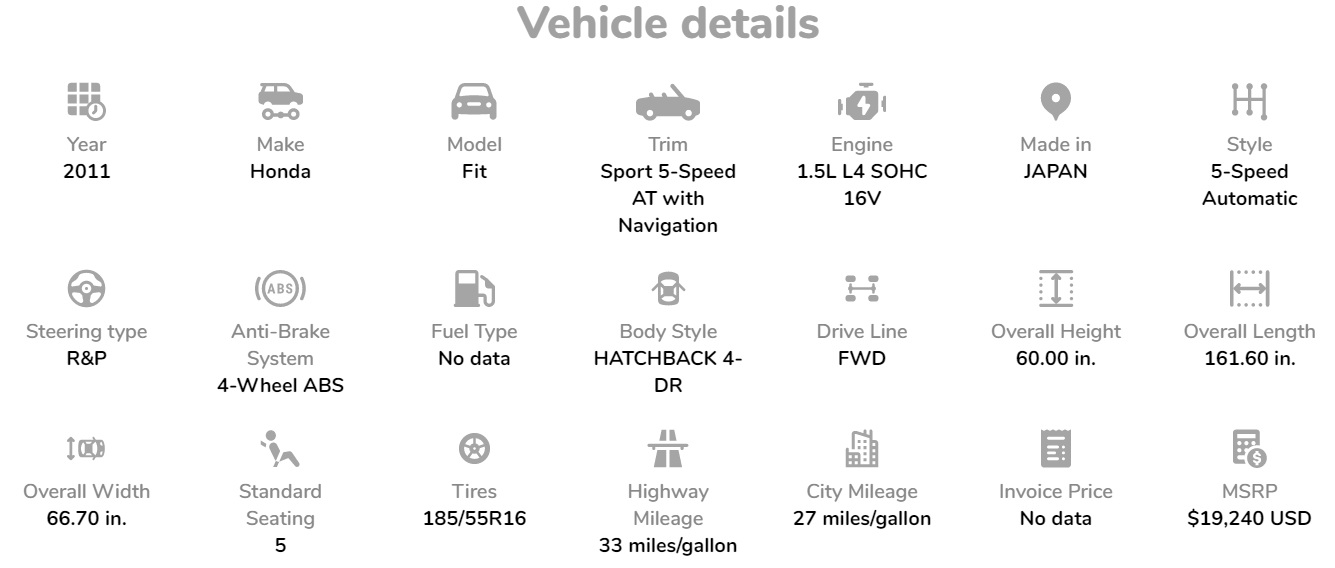
- Odometer Check will report existing problems with odometer, ex.: whether the odometer Exceeds Mechanical Limits, May be Altered, Replaced and all other issues. You’ll see how many records were found with details.

Mileage/Year Dependence may reveal evidence of odometer tampering
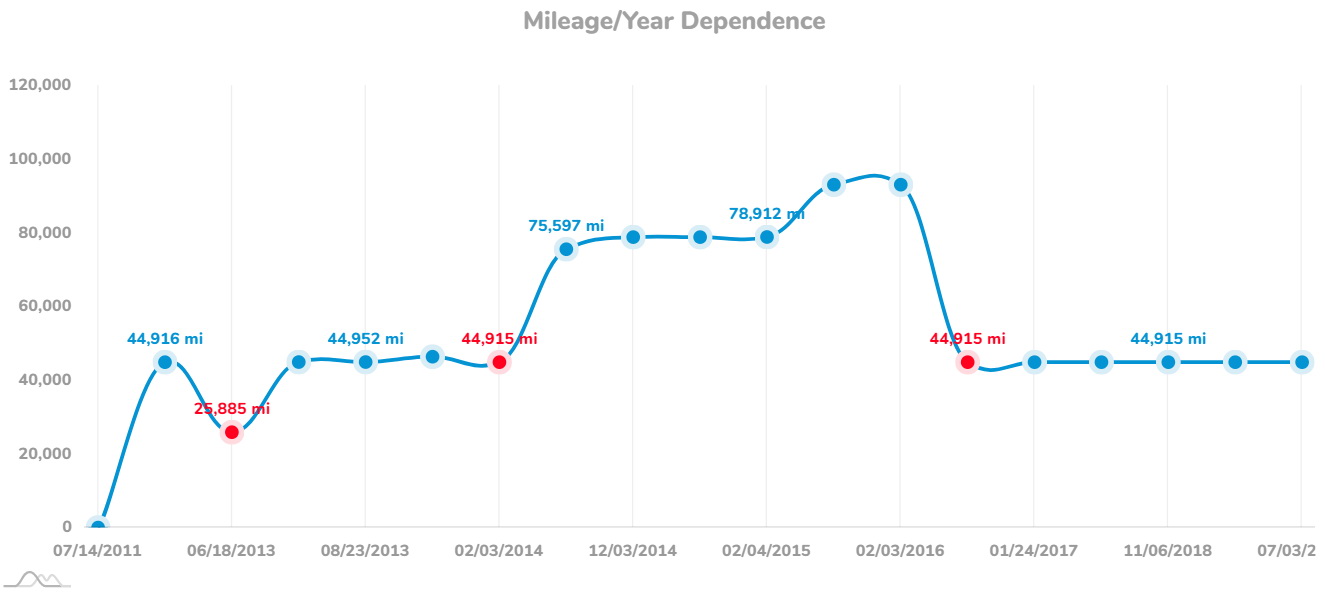
The rest of the information about VIN history records will be shown in the chart below with the date and source reported the mileage for the vehicle you are checking. You’ll be able to search when the odometer readings were altered.
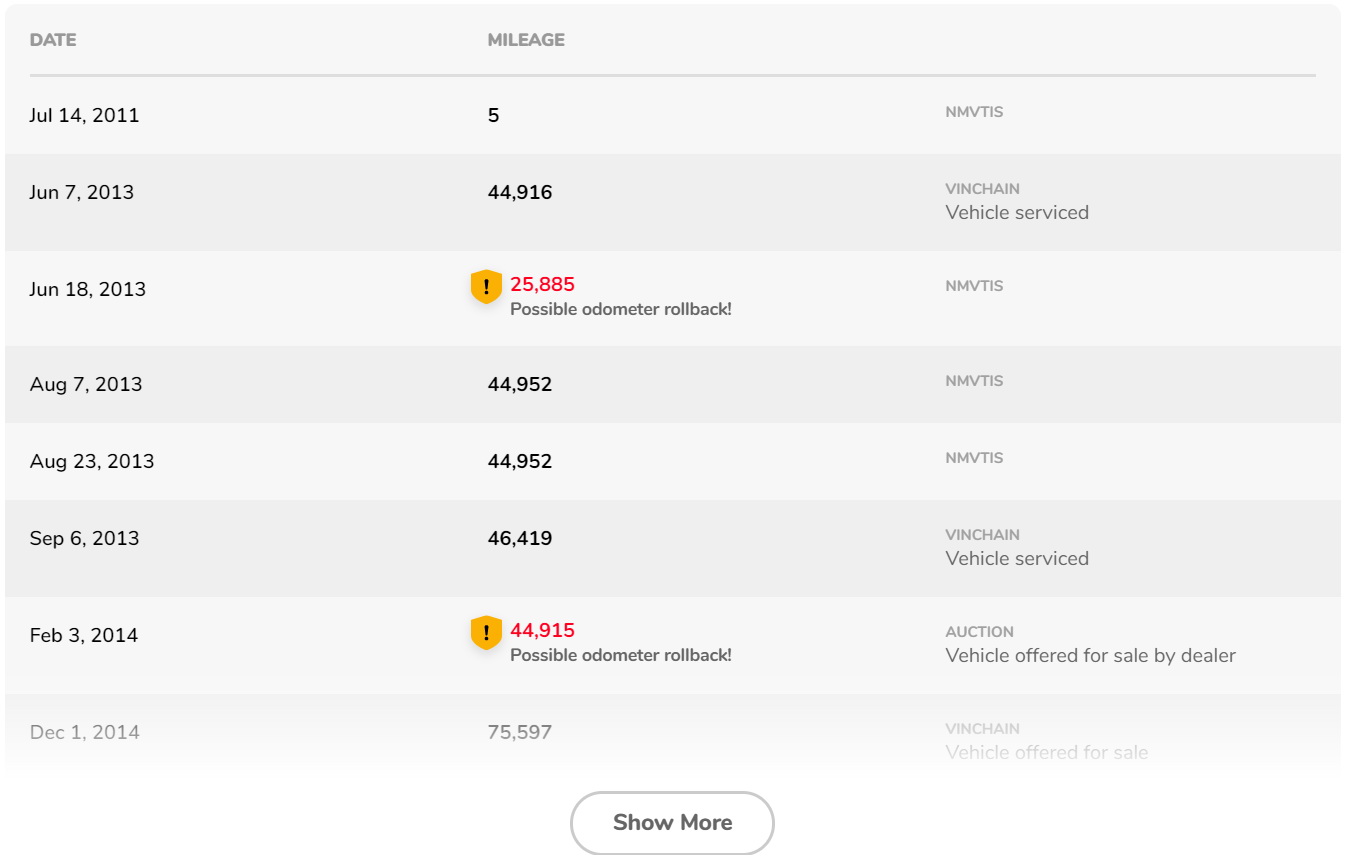
* Also, if you see a mileage described as EXEMPT - The explanation can be as follows: for some reason (which in some cases can simply be the age of the vehicle being greater than 10) the exact original mileage of the vehicle cannot be accurately confirmed. When you sell a car the mileage is indicated and by federal law it is required to accurately be represented. If you cannot do so for some reason then the “exempt” is often used to indicate that the vehicles mileage can no longer be accurately reported.
- Next, how about an Open Safety Recall Check? You are welcome to see if the airbags were installed incorrectly or replacement of service parts and other issues.

- With Junk and Salvage Information, you’ll be able to see:
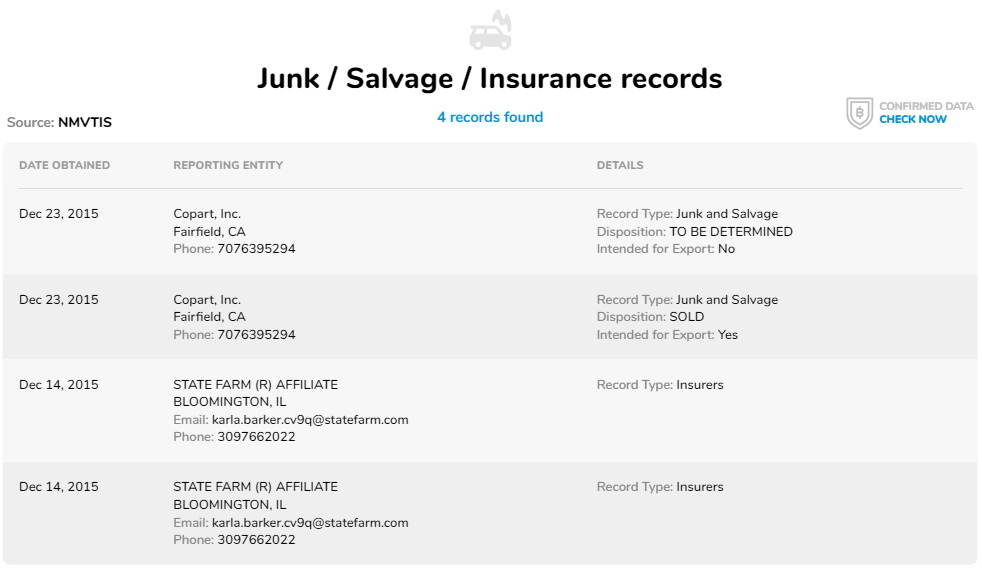
DATE OBTAINED - when the record was made;
ENTITY - the name of the state, which reported the issue;
DETAILS or The Vehicle disposition - showing the vehicles status and if the vehicle was sold at the moment of making a record;
EXP means Intended for export only - if the vehicle is suitable for export or not. Source: NMVTIS - means that those records come from National Motor Vehicle Title Information System
- In this section of Title History Information you can check: VIN title history with Date, State, Mileage and Event that happened and were reported by the specific State. As a rule the source of provided information is NMVTIS.
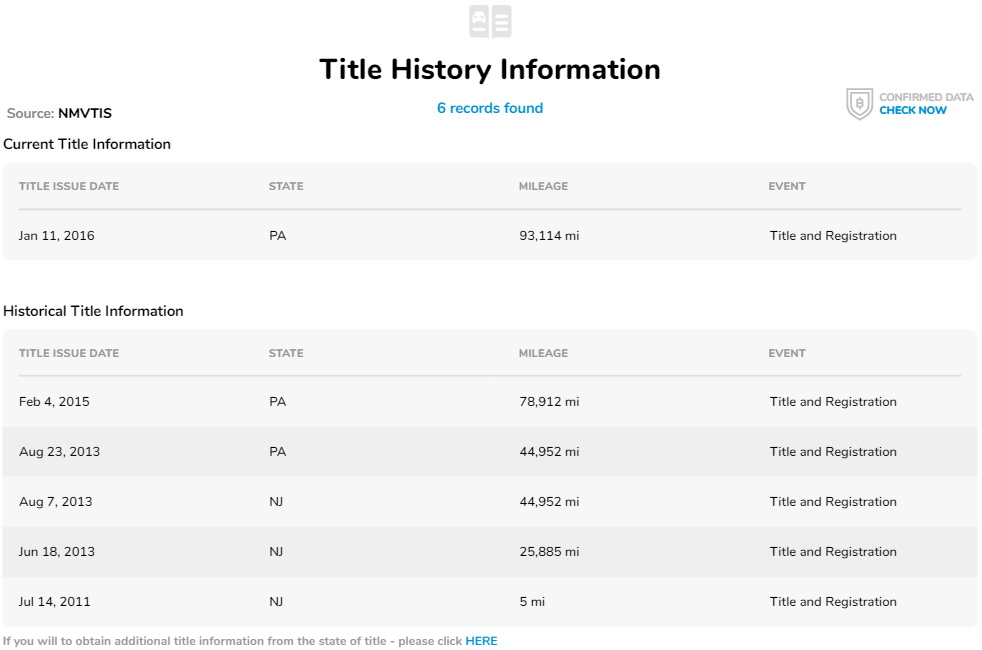
- With the Stolen vehicle check you’ll obviously have an opportunity to see whether the vehicle was reported stolen, and if it was it will be shown in your report.

- The Major title brand check will reveal issues such as if the vehicle was damaged by fire, flood, hail, or has junk scrapped and any other issues that are listed below with the accurate date when the problem was reported.
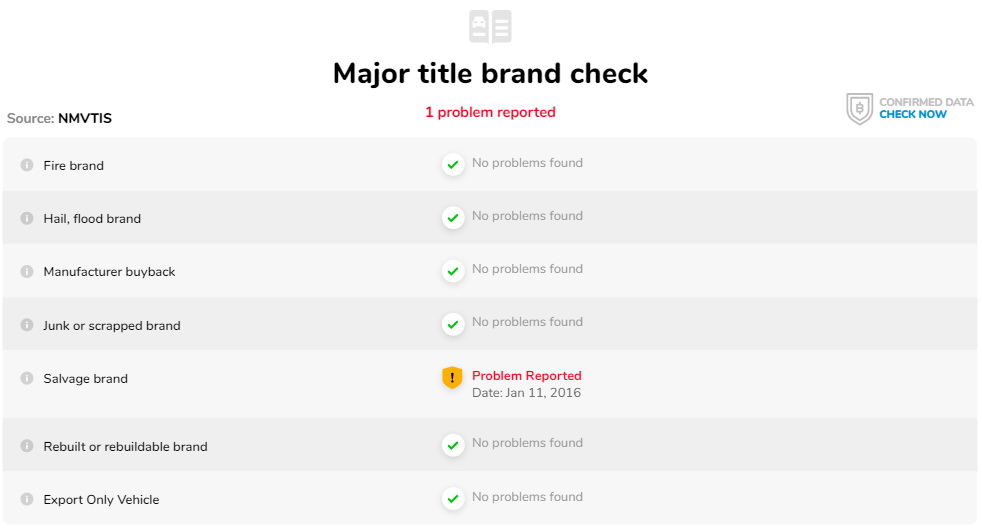
- Other title brand check will indicate such problems as salt water damage, collision, VIN being replaced, owner retained, prior taxi records and many more, with a detailed explanation per each (if you click on a grey question mark). And once again, if you see that there were no problems reported - in most cases that means that the vehicle is good enough as it doesn’t have such issues.
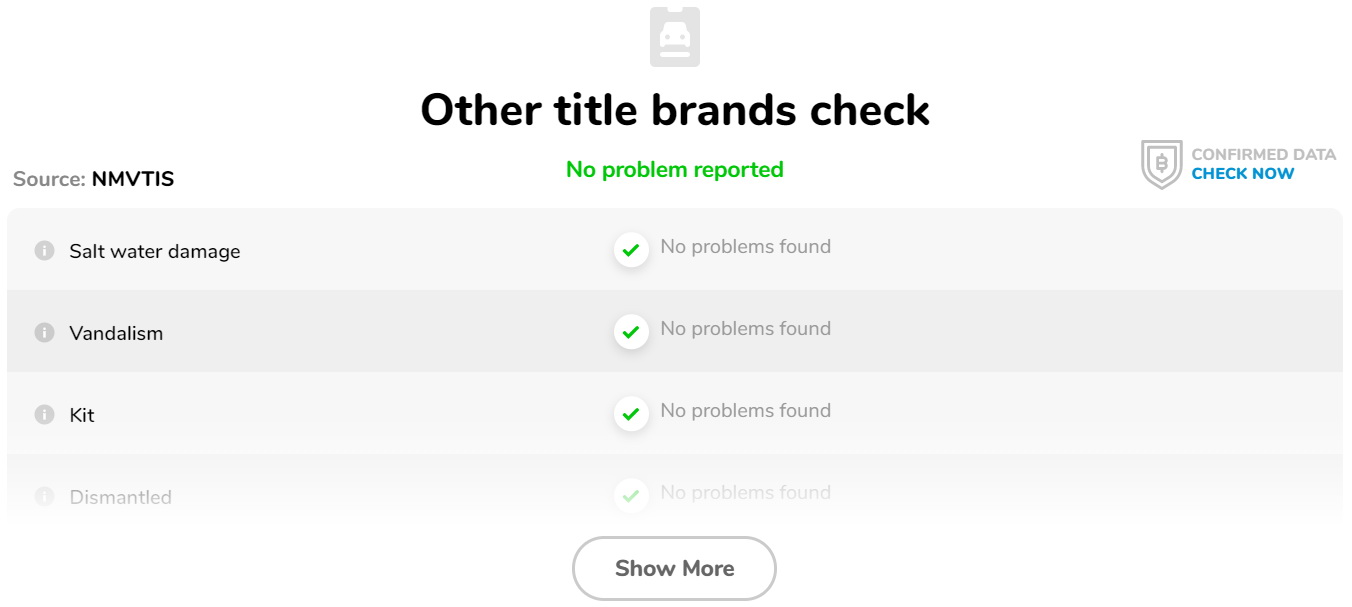
- In this section Vehicle damages you can check actual damages for the vehicle. With its help you can even negotiate a better price while buying a vehicle.

- Car Classifieds Sales Information have turned out to be the ideal platforms for prospective buyers of vehicles to find what they are looking for, and for owners looking to sell their vehicles to find a buyer for their properties.
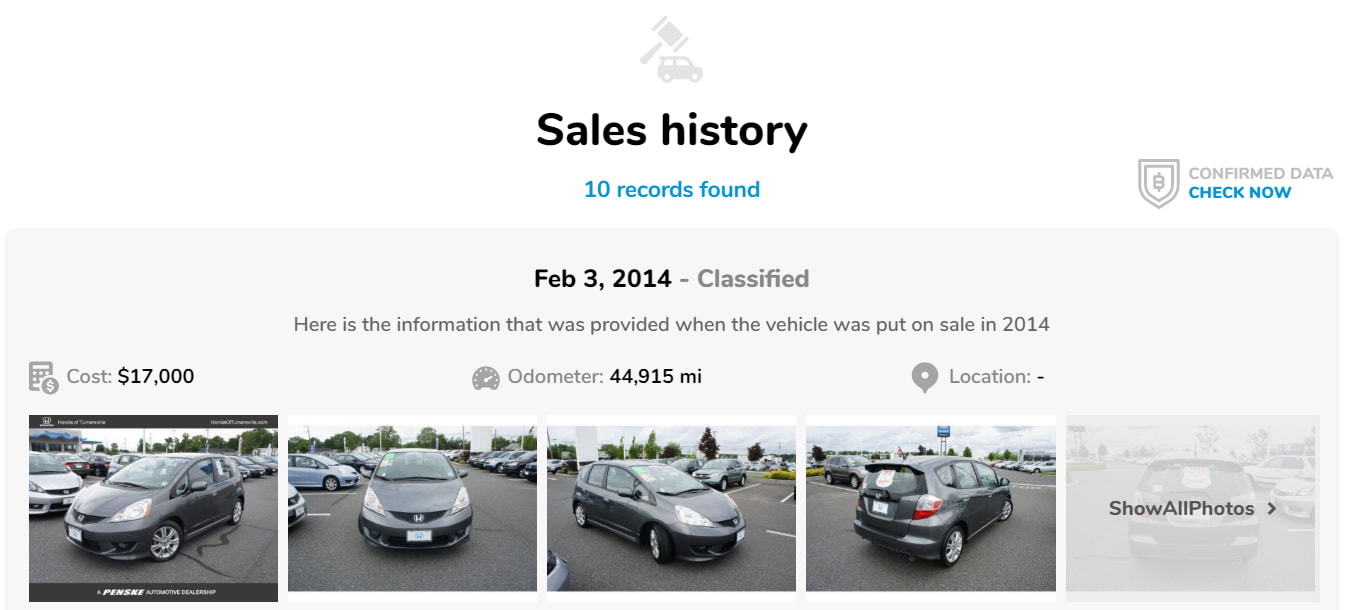

- Auction Sales Information shows records and photos of the vehicle if and when it was put up for auction. This is important information because if the vehicle was auctioned several times, that could be an indicator of lots of hidden issues
Actual Cash Value - that’s the actual value of the vehicle's cost.
Repair Cost - the amount of money spent on repairs so you can predict how much you’ll need.
Sale Status - gives you an understanding about if the car is really valuable in comparison to others. “On Minimum Bid” - can be understanded as the vehicle is not competitive on the market.
Primary Damage - will indicate the main damage of the car specifying the place.
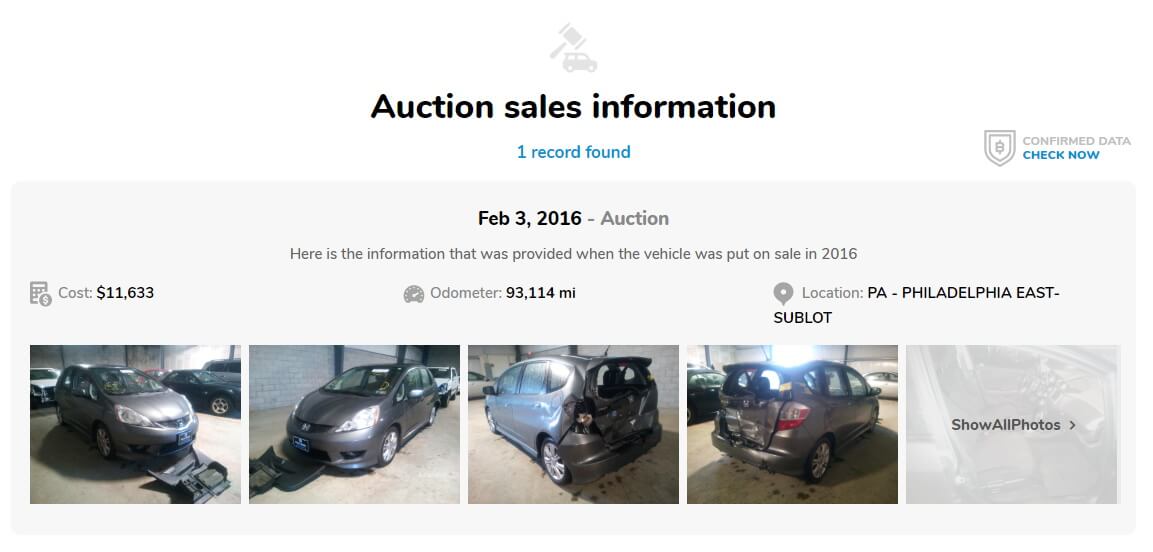
- We even provide a Market Price Analysis tool, which is not typically shown in other vehicle history reports. Our special EpicVIN tool allows you to conduct your own research and compare different price ranges on similar vehicles. All of this is made for your convenience to help you to make the right choice
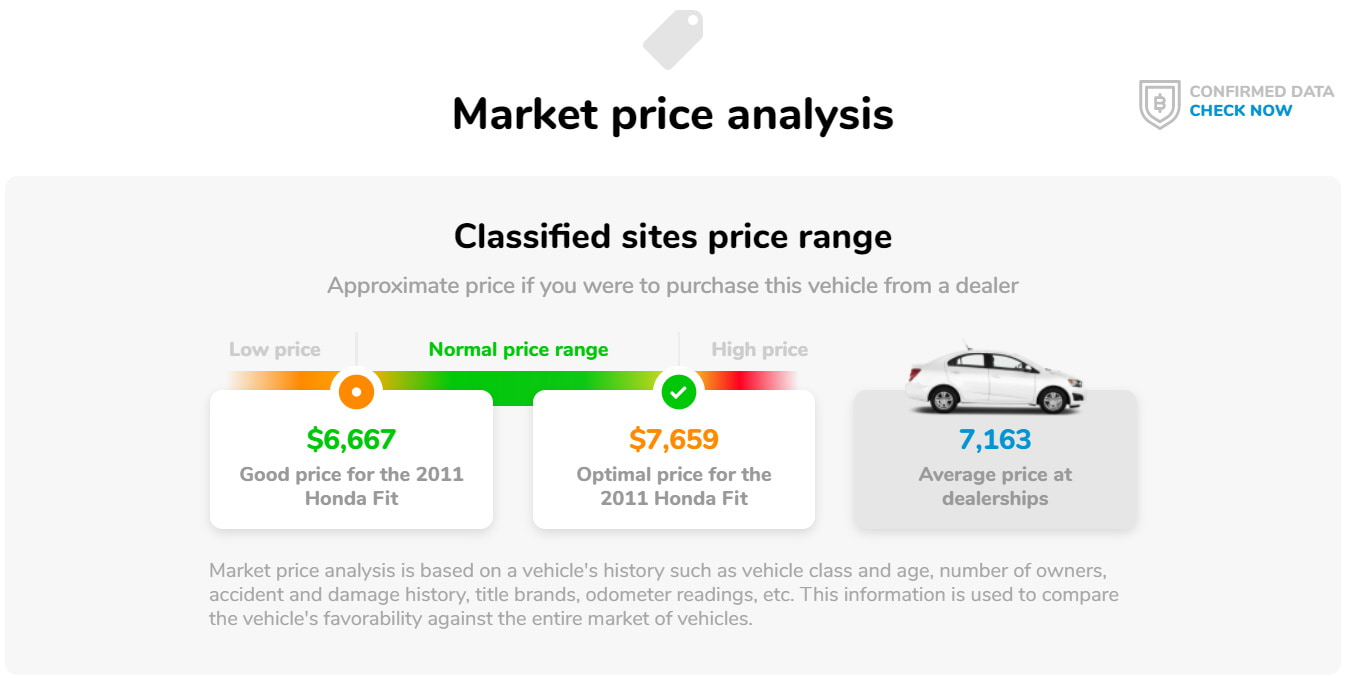
And Auction Price Range:
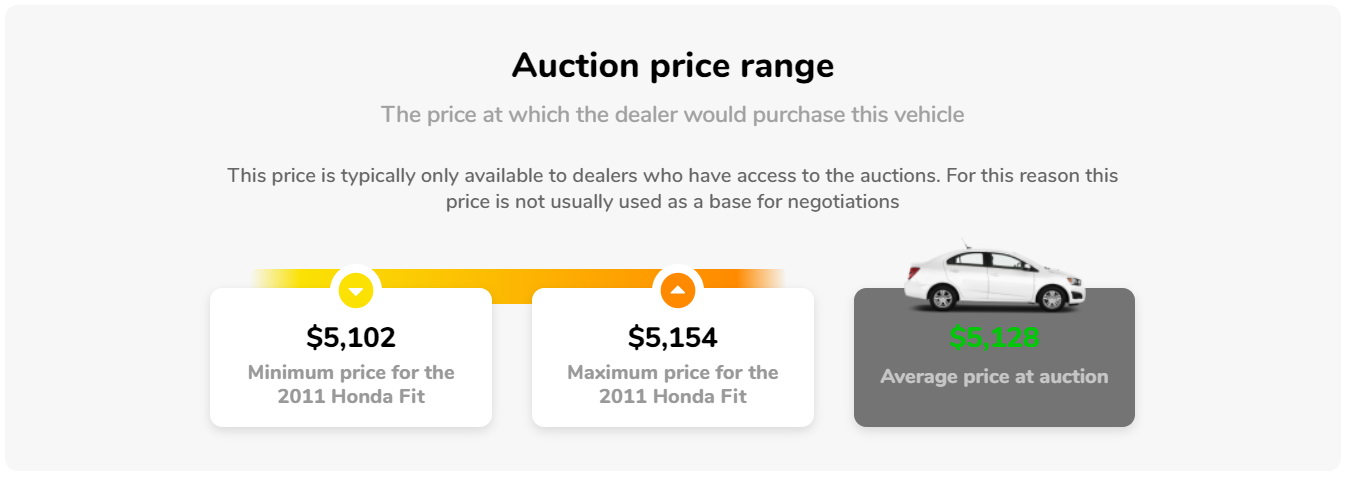
With precise diagrams with Dependencies:

Showing how the price changes during the exploitation period:
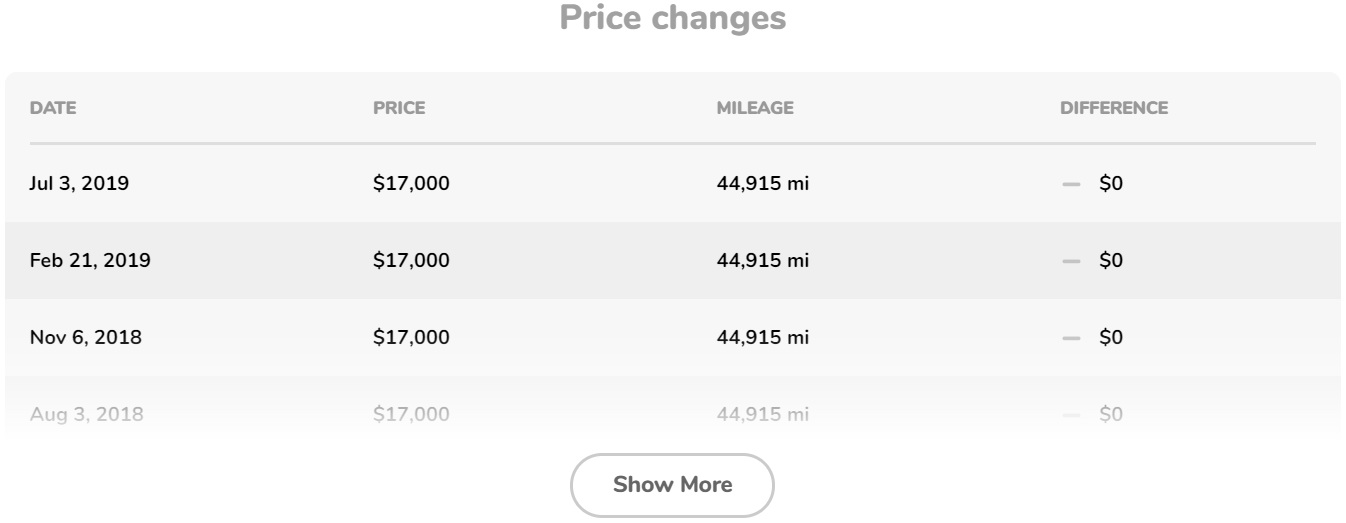
This section Ownership Cost will give you an understanding how much you can expect to pay for repairs, fuel, taxes and more:
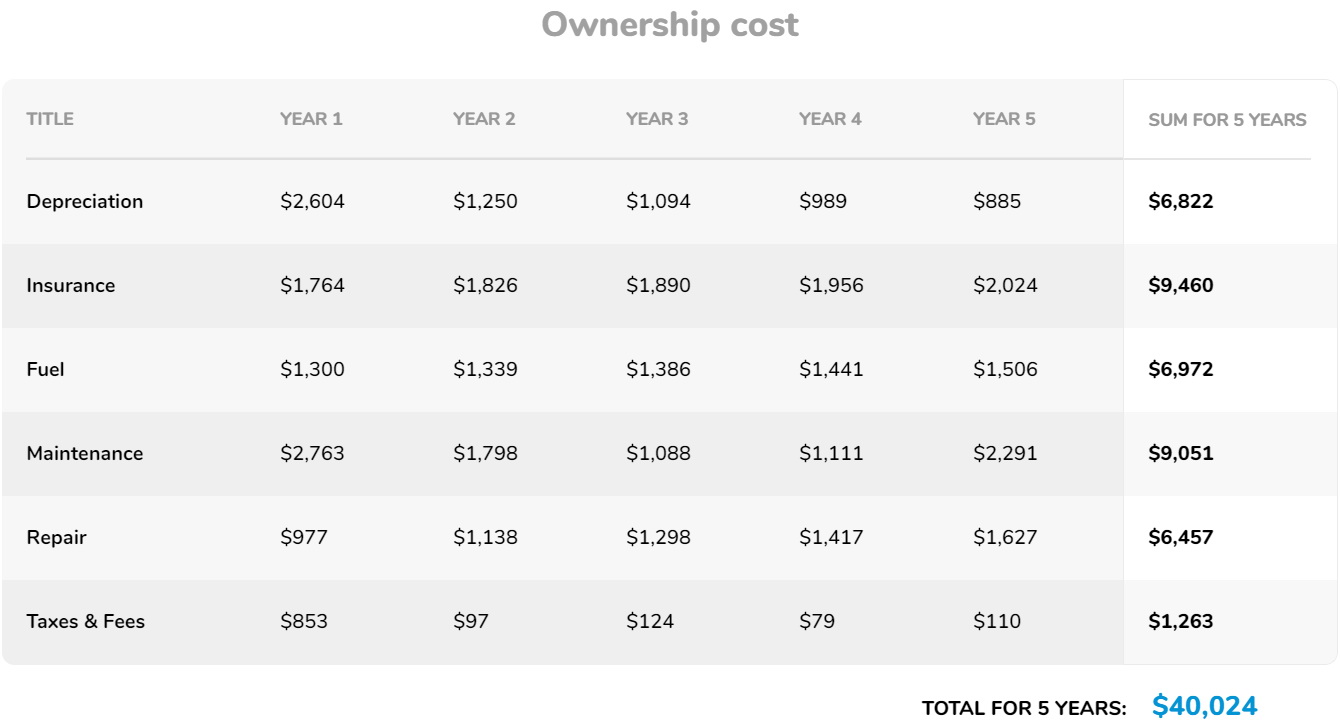
- When you have reviewed all of the information and scrolled to the very bottom of the page, you’ll see Glossary. Click on the tick and you’ll get definitions to the main terms from the report:








